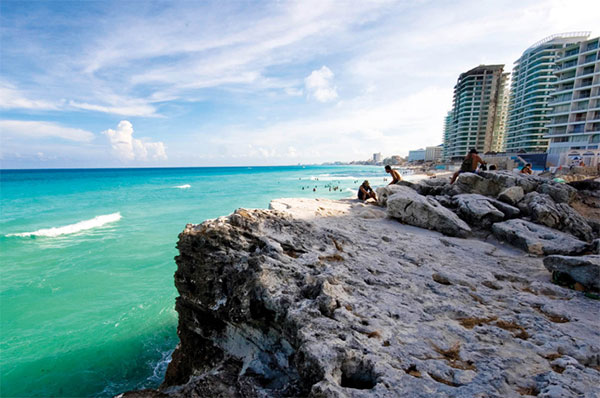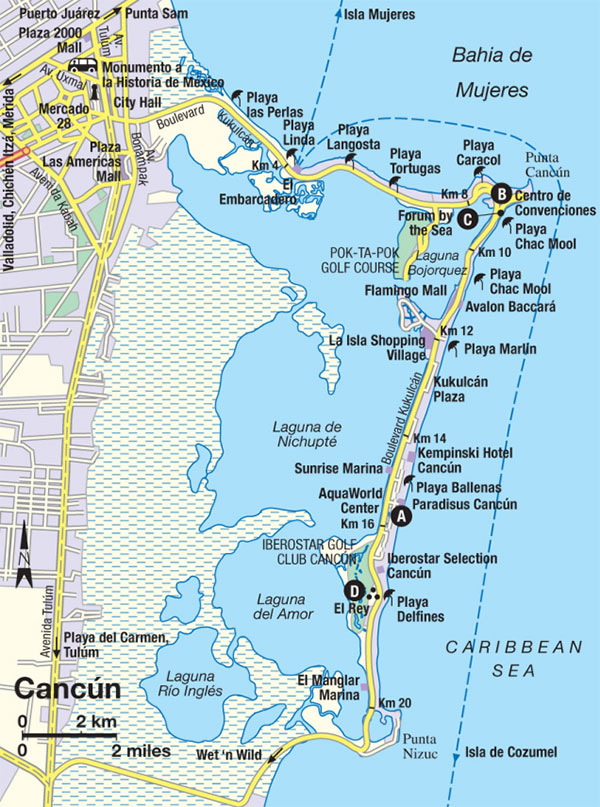FIRE AND RAIN
In the Yucatán, the two main village festivals are related to rain and fire. The rain ceremony is known as Cha-Chaac and takes place at the start of the maize-growing season in February. The ceremony is led by a shaman or H-men who prepares the traditional drink of balche, a mildly intoxicating beverage made from a mixture of honey, water, and secret plant roots that the participants consume before ritual dancing and chants. It is believed to possess magical powers.
The Tumbul Kak or New Fire ceremony has also been performed since the beginning of Maya civilization. According to the Maya calendar, each historical cycle comes to an end after 52 years. This was a very dangerous moment, when the sun might be extinguished, ending life on earth. In order to prevent this, when the planet Venus appears in the heavens, the shaman lights a new fire, which is then taken out to each of the houses, underlining that fire and life are shared by all in the community.
As with many other Maya religious practices, the ritual has been adapted to Christian beliefs brought by Spanish missionaries. It now takes place on Easter Saturday, during the hours when, according to Christian tradition, Jesus had died on the Cross and not yet been resurrected. In this, as in many other ways, Maya culture has borrowed from sources outside itself, but transformed them into something meaningful for its own people.
Caribbean coast
Mexico’s Caribbean coast is best known for Cancún 5 [map] , the country’s purpose-built global resort with its enormous hotels lining dazzling beaches, and the 130km (80-mile) strip of coast to the south now known as the Riviera Maya, with more fabulous beaches and resorts of different sizes running all the way down to the spectacular Maya ruins of Tulum. Tourists flood to Cancún and the Riviera year-round, drawn by their turquoise waters and white sands, the range of outdoor leisure activities, and glitzy nightlife. The sun-soaked coastline offers numerous attractions: tranquil islands such as Isla Mujeres, fascinating archeological sites such as Tulum and Cobá, and pristine wildlife preserves such as Sian Ka’an in the south.

Developments line the coast in the hotel strip, Cancún.
Alex Havret/Apa Publications
Modern Cancún was born in 1969, after the government agency Fonatur was set up to identify potential new tourist sites, draw master plans, and solicit investment. At first there was only jungle here, and a narrow sand strip enclosing the brackish Laguna de Nichupté. A tiny village at the northwestern end of the number 7-shaped island was transformed into a modern town to house all the workers needed to service the big hotels – the first of which opened in 1971 – and bridges connected the island to the mainland at both ends. Building has continued ever since, with ever-bigger hotels replacing the first ones of the 1970s. The permanent population is now around 700,000, and around 6 million visitors arrive every year.
Cancún’s hotel strip
For those in search of a lazily luxurious vacation, sunbathing on a soft white beach and swimming in glorious turquoise waters (or your own pool), Cancún is tailor-made. Honeymooners are not the only people who check into a world-class hotel and rarely leave it. All the hotels are huge and, although next to each other, getting between them can be such a trek it hardly seems worthwhile to go visiting. Most hotels are self-contained, with restaurants, pools, beachfront, discos, lobby bars with soaring atriums, and shopping malls, and often operate on an all-inclusive plan. The hotel strip has just one long street, Boulevard Kukulcán, with no street numbers but kilometer indicators to help locate addresses.
These monumental resort hotels have been built in every conceivable architectural style, from the verdant lobby of the Paradisus Cancún A [map] at Km 16.5, whose leafy plant tendrils drift over the balconies to create a lush tropical atmosphere, to the modernist Dreams Sands Cancún Resort & Spa at Km 9.5.
Just before the halfway point where the boulevard turns sharp right is the Centro de Convenciones B [map] (Km 9), the scene of concerts and other cultural events. Across the boulevard from the Convention Center is another very important part of Cancún, its main nightlife hub (at Km 9.5), around the Forum by the Sea C [map] shopping mall, with huge franchises of chains like the Hard Rock Café. Outside, crowds stand in line every night outside the giant multi-space nightclubs – some of the world’s biggest – like The City Nightclub and Coco Bongo, all offering a choice of music, light shows and live acts, non-stop energy, and fantastically efficient air conditioning.
Against all odds, some Mayan sites have survived: the major one, El Rey D [map] , now stands beside the golf course of the Iberostar Selection Cancún hotel. Most of El Rey dates from the post-classic era of Maya civilization just before the Spanish Conquest.
Fact
The bright lights of big box retailers and advertising hoardings can make parts of the Riviera Maya seem quite urban. Their fast growth has caught many creatures unawares: jaguars are still spotted wandering through the woods behind Playa del Carmen and pumas are occasionally seen in residential areas south of Cancun.
Downtown Cancún
Travelers less addicted to glitz, or maybe on a budget, stay in Ciudad Cancún (downtown), in one of the inexpensive hotels near reliable Sanborns and the bus station where Avenida Uxmal meets the main drag, tree-shaded Avenida Tulum. Explore the side streets for authentic restaurants. Between the Monumento a la Historia de México (Mexican History Monument) at the bus station end and the Monumento Diálogo Norte–Sur (dedicated to North–South dialogue) is everything a visitor might need: markets, shops, money-changers, hotels, bars, and tourist offices. Buses on the R-1 route, conveniently marked Hotel Zone or Downtown, run continually from downtown all the way along the wide boulevard, turning back at the southern end. Taxis are everywhere, and because of the distances in Cancún, they are often indispensable. Tariffs are worked out on a zonal system, with rates around downtown about US$5, while downtown to Km 9.5 (for nightlife) is around US$15.
